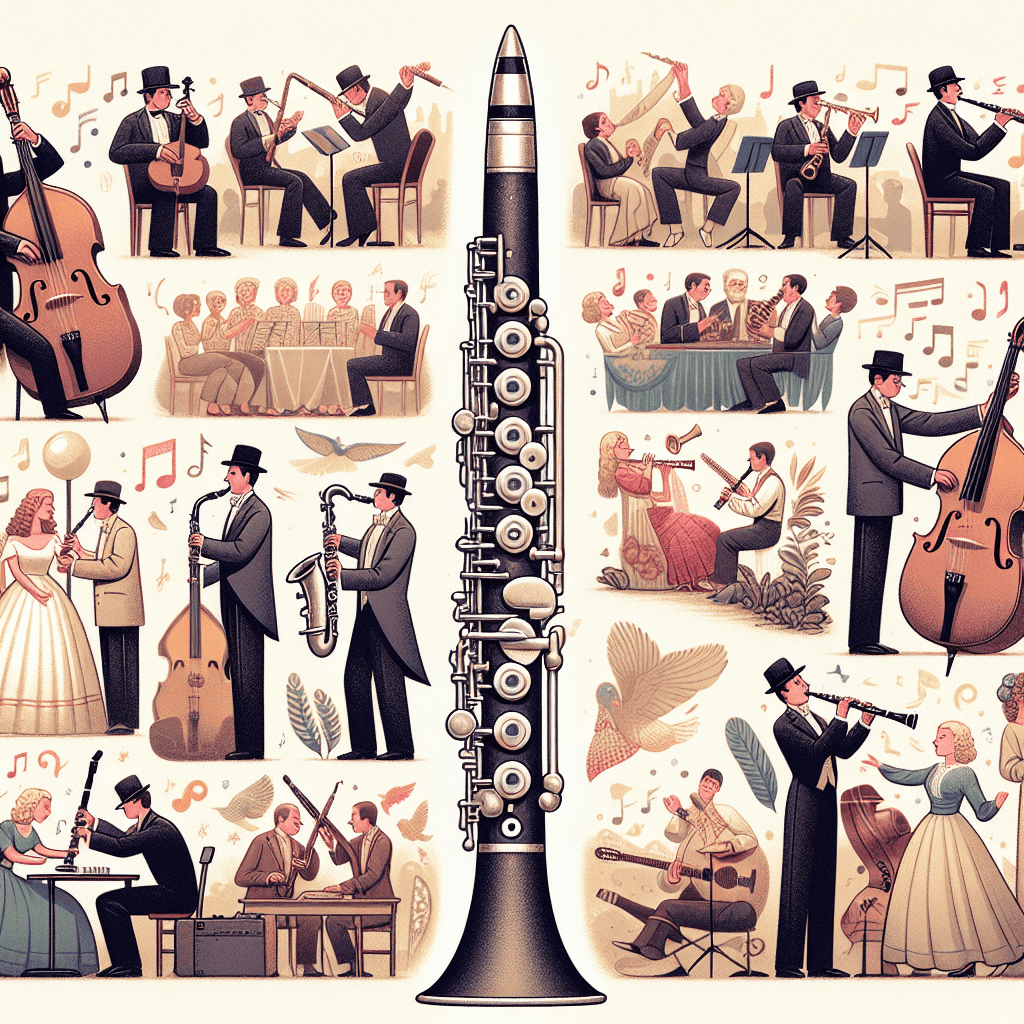Mastering the B Flat Clarinet: A Fun Guide for Music Lovers
The B flat clarinet, often called the Bb clarinet, is a superstar in the clarinet family. Known for its versatility and expressive range, it shines in various musical genres, from classical orchestras to jazz bands. Let's dive into the B flat clarinet's history, parts, and role, offering valuable insights for both newbies and seasoned players.
A Quick History of the B Flat Clarinet
- Origins: The clarinet came to life in the early 1700s. Johann Christoph Denner, a German instrument maker, is credited with its invention, evolving from the earlier chalumeau.
- Evolution: Over time, the clarinet saw major changes, especially in key systems. The Boehm system, introduced in the 19th century, revolutionized the instrument, making it easier to play and improving its sound.
- Modern Usage: Today, the B flat clarinet is a staple in many musical settings, from classical symphonies to jazz bands and solo performances.
| Time Period | Key Development |
|---|---|
| Early 1700s | Invention by Johann Christoph Denner |
| 19th Century | Introduction of the Boehm system |
| 20th Century to Present | Widespread use in various musical genres |
Parts of the B Flat Clarinet
Knowing the parts of the B flat clarinet is crucial for playing and taking care of it:
- Mouthpiece: Where you blow into, equipped with a reed and ligature, essential for sound production.
- Barrel: Connects the mouthpiece to the upper joint, helping with tuning adjustments.
- Upper Joint: Contains the keys and tone holes operated by the left hand.
- Lower Joint: Houses the keys and tone holes operated by the right hand.
- Bell: The flared end of the clarinet that helps project the sound.
The B Flat Clarinet in Different Music Genres
- Classical Music: The B flat clarinet is essential in orchestras and chamber music. Composers like Mozart and Brahms have written extensively for the clarinet, showcasing its lyrical and dynamic capabilities.
- Jazz: In jazz, the B flat clarinet gained prominence in the early 20th century. Jazz legends like Benny Goodman and Artie Shaw brought the clarinet to the forefront with their virtuosic playing and innovative styles.
- Concert Bands: The B flat clarinet is a cornerstone in concert bands, often carrying the melody and blending with other instruments to create a full, rich sound.
- Solo Performances: Solo repertoire for the B flat clarinet is vast, ranging from classical concertos to contemporary pieces. Its expressive range and versatility make it a favorite for soloists.
Tips for Choosing the Right B Flat Clarinet
Picking the right B flat clarinet involves several considerations to make sure it fits your needs:
- Beginner Clarinets: Usually made from durable plastic or resin. Designed for ease of play and affordability, they are perfect for young or new players.
- Intermediate Clarinets: Often crafted from grenadilla wood, these clarinets offer a richer tone and improved key mechanisms. They are suitable for advancing students.
- Professional Clarinets: Made from high-quality materials with exceptional craftsmanship, these clarinets are designed for precise intonation and superior sound quality. They are best for advanced players and professionals.
- Testing and Trial: Always test multiple models to find the best fit. Pay attention to the instrument's response, tone, and ease of play. Seek advice from teachers or experienced clarinetists to make an informed decision.
Maintenance and Care for the B Flat Clarinet
Proper maintenance is key to keeping your B flat clarinet in good shape and performing well:
- Daily Cleaning: Swab the interior after each use to remove moisture and prevent buildup. Clean the mouthpiece regularly with warm water and a mouthpiece brush.
- Reed Care: Rotate reeds to extend their lifespan. Store reeds in a reed case to maintain their shape and quality.
- Key Maintenance: Keep keys and pads clean and dry. Regularly check for loose screws and ensure keys move smoothly.
- Professional Servicing: Schedule regular check-ups with a professional technician. Address any issues with the wood or key mechanisms promptly.
Enhancing Your Skills on the B Flat Clarinet
Continuous practice and learning are essential for mastering the B flat clarinet. Here are some tips to help you improve:
- Regular Practice: Dedicate consistent time to practice daily. Focus on scales, exercises, and repertoire to build technique.
- Listening and Learning: Listen to recordings of renowned clarinetists for inspiration. Attend live performances to observe techniques and styles.
- Lessons and Workshops: Take lessons from a qualified teacher for personalized guidance. Participate in workshops and masterclasses to learn from experienced musicians.
- Playing in Ensembles: Join ensembles or bands to enhance your collaborative skills. Playing with others can help you develop timing, intonation, and overall musicianship.
The B flat clarinet is a remarkable instrument with a rich history and significant role in various musical genres. By understanding its construction, selecting the right model, and maintaining it properly, you can unlock its full potential and enjoy a rewarding musical journey. Whether you're a beginner or an experienced clarinetist, the B flat clarinet offers endless possibilities for exploration and expression.







